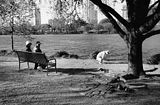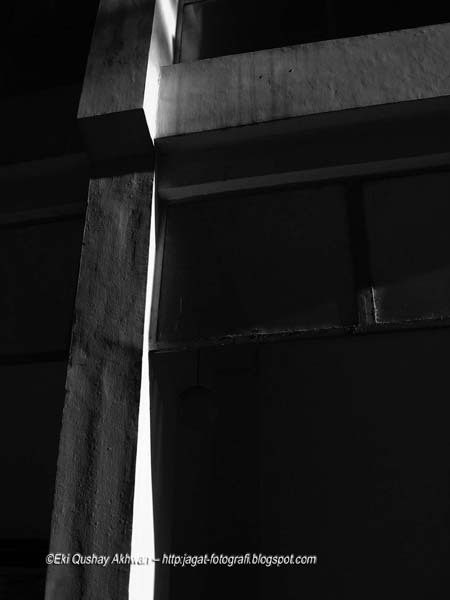
Photography is about light: How we respond to light, how light falls on objects, how it creates illusions of space and depth, and how we capture it on our medium.
Text and picture ©Eki Qushay Akhwan – http://jagat-fotografi.blogspot.com/
Sunday, September 21, 2008
Photo Exploration #4: Light and Geometry
Saturday, September 20, 2008
Photo Exploration # 3: Shadows, Light, and Textures
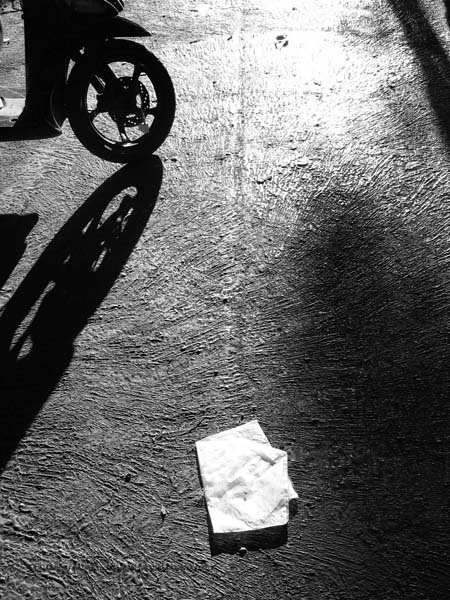
In photography, shadows, light, and texture are always interesting elements with their own visual impacts. We don't need to go far to find them. We pass by them everyday, often ignore them for their "ordinariness", and - as a result - miss the invaluable photo opportunities they often present. Exploration, as I said earlier, is about looking carefully and discovering the extraordinary in the ordinary.
Here is my third post on the exploration of the day to day phenomenon that we pass by in our daily life experiences: Light, shadows, and texture. I took this photograph at the parking lot of my office building one sunny late afternoon when the warm, directional light striked ever so beautifully and touched my mind's eye and moved my finger to press the shutter.
Friday, September 19, 2008
Photo Exploration #2: Of Interview and Carpe Diem!
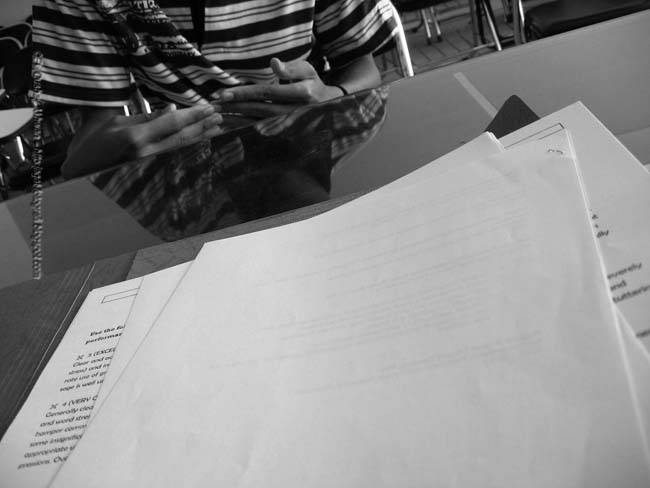
When I said about exploring our day to day environs, I didn't mean to say that it was just things or objects, but also people with whom we interact.
This is what I did yesterday. Opportunities to make photographs do present themselves even when we are busy doing other things. It's our decision whether or not to grab them. Carpe diem, seize the day!
Thursday, September 18, 2008
Photo Exploration #1: Nature and Geometry
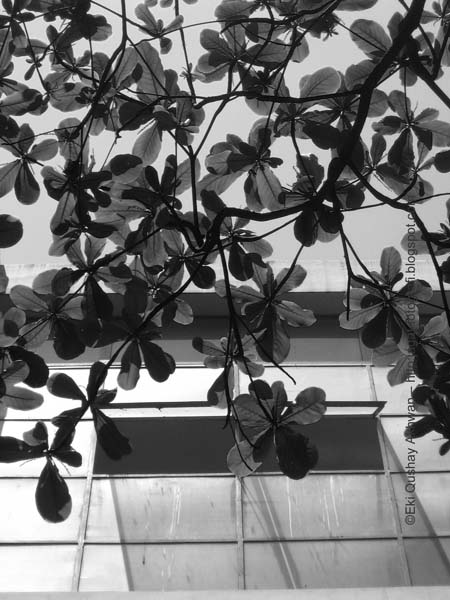
As I said in the previous post, I feel that it was necessary for a photographer or photography enthusiast to keep honing his/her sensitivity to the visual stimuli around him/her. One way to do it is by always having a camera at his/her disposal and exploring the environment closest to him/her, e.g. home, place of work, the streets he/she passes by everyday, etc.
Our daily environments may look ordinary and uninteresting because we are so used to them. However, if we really look and observe, I am sure there are a lot of hidden visual treasures that we can discover. Here is the first of what I hope to be a series of regular posts on this blog of my visual exploration of the near and ordinary - of places that I pass and see everyday.
These windows and the glowing leaves of "ketapang" tree in front of my office complex got my attention one sunny afternoon. The first thing that moved me about this scene was the glowing leaves and the hard shadows that fell on the glass windows. It's an intinctive shot. I like the rigid geometric lines of both the windows and the shadows and the "flowing" natural lines of the leaves. I explored the scene from different angles, trying to find the best composition I could get that combine the natural beauty and the beauty of the geometric lines. This photograph has one of the angles that I think best captured my vision of harmony between nature and nurture, that of leaves and tree branches and the man-made architectural geometry.
Text and picture copyrights ©Eki Qushay Akhwan, all rights reserved.
Wednesday, September 17, 2008
Visual Stimulations - Daily Excercise for Photographers
Text and pictures by Eki Qushay Akhwan
Above all else, being a photographer, I think, is about being sensitive and acute to visual stimuli. Such sensitivity may be in-born in some people, but for the majority others, they are acquired skills. And, like any other skills, visual dexterity can only be maintained and improved through discipline and constant exercise.
Unlike pro photographers who have their skills honed with every project they have and who don't generally have to be concerned with making a living from a job other than photography, we - amateurs and photo enthusiasts - have to create our own opportunities to sharpen our skills and do have non-photography things to worry about, e.g. job, study, family, etc. Over time, these other life priorities and excuses can cost us our visual acuity, and make our mind numb, our hands stiff, and our camera bodies rusty - not to mention the accumulating dust and growing fungi in our lenses.
To a photo enthusiast like us, not making a photo over a long period of time is like slowly killing ourselves; the vigor of our photography, skills, and equipments will eventually be wilting and die with our sanity.
Of course, there are always options. After all, living things are made to defy (well, defer) death. This is what I do (and I think many other photography enthusiasts do) and would like to suggest to you:
First, I always have a camera with me. It’s small, lightwieight, pocket Canon PowerShot A510, 3.2 mpx. It sounds pretty out of date for today's standard of 7mpx or above. But I love this camera and it has made many of my favorite photographs. It is reliable, has friendly controls and versatility that only a few other digital pocket cameras (DPC) could offer.
I am not trying to suggest that it is the camera you should get for yourself. In fact, I think, any cameras will do as long as it is small enough, light weight, versatile, and let you have as much control as possible in your picture-making. My camera (the one I mentioned earlier) has shutter and aperture priorities, manual overide, white balance control, and – last but not least – exposure compensation facility, which give me the controls I need to be creative in my photography.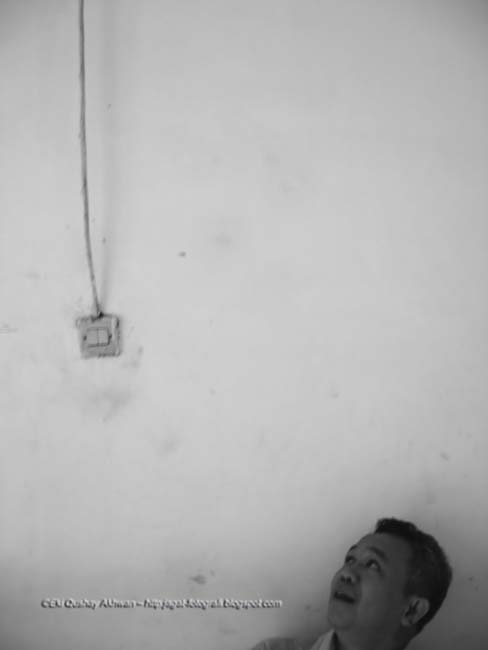
Having a small and light weight camera has some advantages. It’s easy to carry around and it’s inconspicuous and does not attract attention in public places. It has its drawbacks too. The most serious is its shutter lag. But so far it’s okay with me.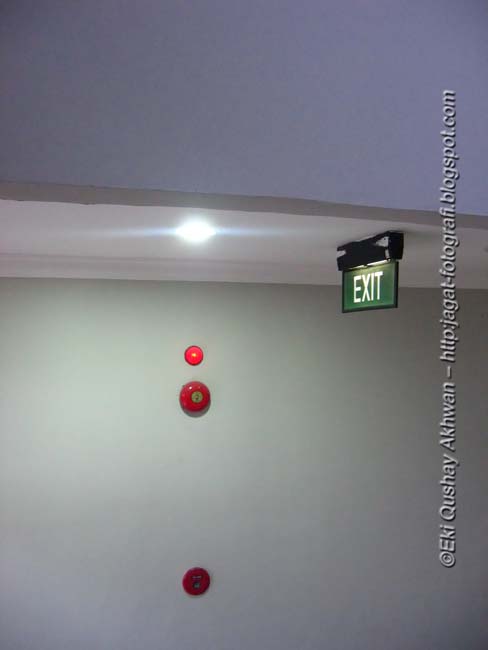
The second thing I do now that I always have a camera with me is I take pictures whenever I can. On the way to and from work, at work place, etc. True, in places that you are so used to, our vision may sometimes be blinded – everything seems to look ordinary and not interesting anymore. But that’s exactly where the challenge is. Trying to see the “extraordinaries” in the “ordinaries” is, I think, the best exercise a photographer can get. Look and look again. There are a lot of things that can really surprise you when you really look. The building, its details (windows, doors, walls, straircases), the people and their activities, the parking lot. I find no shortages of visual inspirations in them. All I need to do is look and really look, and free myself from the constraints of what other would think of my photographs. I just flow with my visual insticts and take pictures of whatever catches my attention. Some of the pictures I make may not be of the liking of my audience, but I enjoy making them and usually like them, a lot. I feel that my creativity is being honed and my freedom of expression released from the “caging” of unappreciative look of my audience. What’s best though is that with this, I practice (exercise) my visual acuity and sensitivity to visual stimulations that are all around me. Here I include some of the shots I made when I really am free to explore my visual instincts.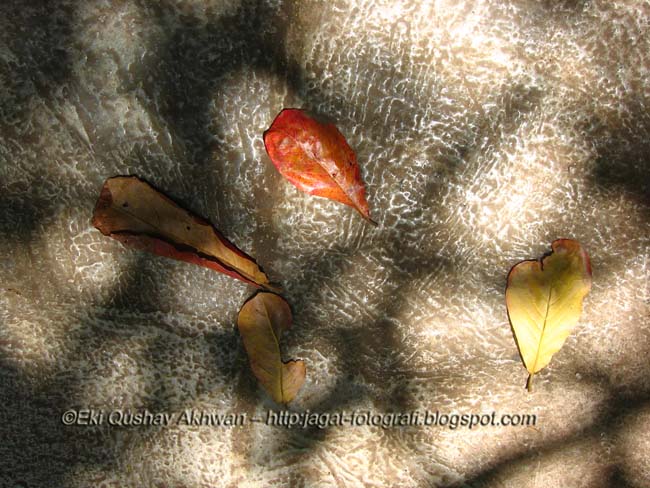
Sunday, September 14, 2008
Surviving Visual Suffocation
For me, as I am sure it is for you, making photos is like breathing the air. Deprived of it, we all feel suffocated.
Unfortunately, it is not what I do for life. And that other thing called job takes almost all of my breathing space. Modification is called for if I am to survive. So, everyday, and in between other things to do, I find moments on my own where I can still breathe in the air I need: making photographs.
Here are some of the things I explored this week: Stairways.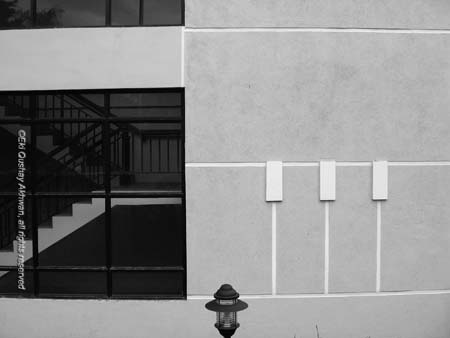
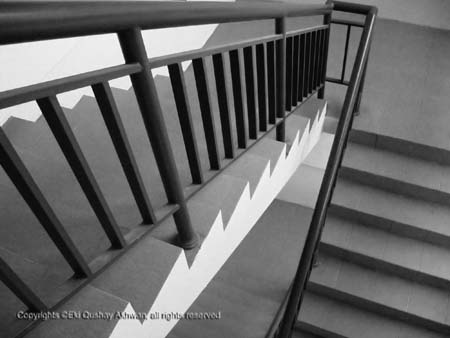
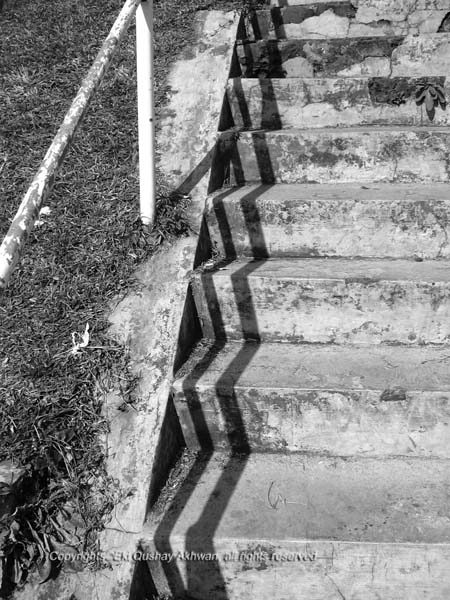
Wednesday, September 10, 2008
Of Geometric Signature: Questions of Commodifications in Photographers and Their Audience
Text and pictures © Eki Qushay Akhwan, all rights reserved
Can we really take photos without an audience in mind?
This question has been hovering my mind for the past few days. Looking back throughout the years of my affairs with photography, I can’t really remember any moments when I took a photo without thinking of an audience in mind. Perhaps there were, but they were too few to remember. In one way or another, there has always been an audience in mind when I am taking a picture.
The audience doesn’t have to be an outsider. Sometimes it’s just myself, thinking of what satisfaction I might get from taking good pictures. More often than not, however, it’s an outside audience that I have in mind. Getting an approving comment from a viewer is like getting a shot of adrenalin that keeps me going (and craving) for more good photographs. It’s a kind of energy that even proper food can’t replace. Well, sort of.
There is a problem in this though. When you have an audience in mind, you can’t really (and I mean totally) be yourself. There is always some sort of compromise taking place between your creativity and the public’s perception of what you create with it. Compromise is of course not a one-way force. There is always a push and pull in this. It’s like you put your creativity on a place, offering it to be tasted (tested?) by the public and – depending on their reactions to it – you will somewhat modify your creative ingredients so that they are more in tune with the public’s palate.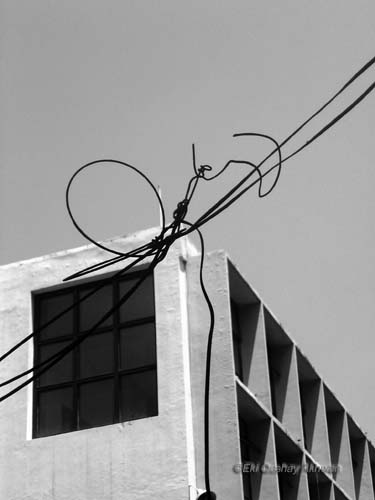
Geometric Signature, ©Eki Qushay Akhwan
Some artists (read: photographers) have a strong creative energy push. Driven by some sort of extraordinary vision and a strong conviction in that vision, an artist may choose to be isolated, if only temporarily, from the negative scrutiny of the “ignorant” masses, moving on with what he or she believes to be aesthetically good. But even with artists like this, some sort of expectation that somewhere, sometime, and some people might eventually see what he/she has already seen. And this is also a kind of audience, albeit a differed one.
Many artists, on the other hand, don’t have the strength to keep their conviction and choose to fine-tune their works to their audience’s scrutiny.
For the former as well as for the later, some balance will eventually be achieved in time in the form of some sort of compromise.
Like in language, the criteria for good and bad, acceptable and not acceptable, will always be shifting because it is an object of social and cultural conditioning, which in themselves are eternally dynamic.
Modification (or co-modification) of one’s creative expression that takes place as a result compromise-making does not need to be taken as a negative discourse. As I said earlier, the act of (co-)modification implies a certain degree of conscious control on the part of the doer. Hence, it is still possible to avoid the unnecessary pressure of an “ignorant” or uprepared audience on the kind of creative expressions you have to offer by, for example, choosing a closely like-minded audience. Say if your style of photography is steet – candid and unplanned – then you will have a better chance for appreciation (and therefore less pressure on modification) if you have an audience who are also into that kind of practice. The limits of this choice is, I think, your own extremity, that is the more extreme you are in your choice of aesthetic expression, the more limited like-minded audience you will likely have to share your passion with.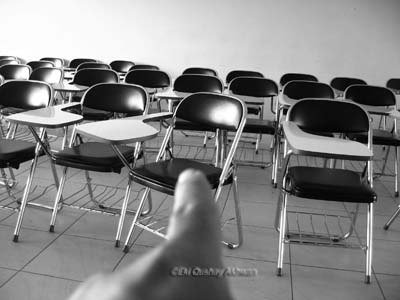
Pointing Emptiness, ©Eki Qushay Akhwan
All this are just my ramblings. As a photographer (photography enthusiast), I feel that I’m still very much prone to my own thoughts of who my audience will be when it comes to creating a photograph. What I like, what I feel so strongly about, is still a subject of volatility induced by my audience. Photographs I’m attaching underneath, for example, may not find ready audience, but myself. And this, sometimes, have me rethink of what I need to do to gain wider acceptance.
Now, it’s your turn to speak up and have a conversation about this. If you like!
Unless otherwise stated, the articles and photos in this blog are the copyright property of Eki Qushay Akhwan. All rights reserved. You may NOT republish any of them in any forms without prior permission in writing from Eki Qushay Akhwan.
Kecuali disebutkan secara khusus, hak cipta atas tulisan dan karya foto di dalam blog ini ada pada Eki Qushay Akhwan. Dilarang mempublikasi ulang artikel dan/atau karya foto di dalam blog ini dalam bentuk apapun tanpa izin tertulis dari Eki Qushay Akhwan.







.jpg)


